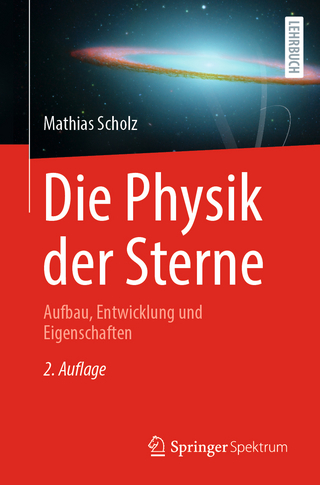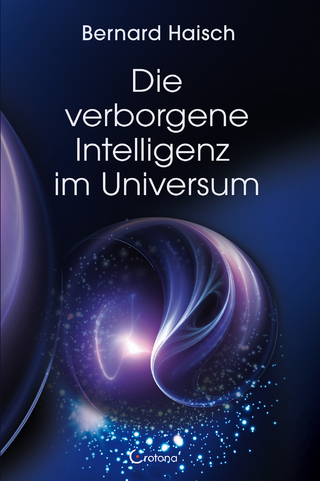
Complex Planetary Systems II (IAU S382)
Cambridge University Press (Verlag)
978-1-009-39905-0 (ISBN)
IAU Symposium 382, Complex Planetary Systems II (CPS II), presented a real opportunity to show the power of interdisciplinary collaboration through gathering astronomers of many disciplines together. Complex systems are those composed of interacting parts whose local behavior, resulting from the interactions between them, cannot provide a complete understanding of the global, macroscopic behaviour. This requires complex systems to be studied by transdisciplinary teams, who together are able to understand the whole construction and critically analyze the connections among the different levels of description. The huge number of available observations, from ground and space, their improved precision, and the computational power available today, have spectacularly changed the nature of the dynamical models, especially for planetary evolution studies. CPS II, a Kavli–IAU Symposium, opened new doors, created collaborations, exchanges of ideas, and combinations of techniques – sometimes unexpected – to meet the challenges of the complex astronomical systems.
1. The obliquity of Mercury: Models and interpretation Rose-Marie Baland; 2. Dynamics of circumstellar planets in binary star systems Man Hoi Lee; 3. Long-term stability and dynamical spacing of compact planetary systems Antoine Petit; 4. Long-term evolution of exoplanet systems Cristobal Petrovich; 5. Derivation and properties of the angular momentum relative amended potential Daniel Scheeres; 6. Progress report on the BEBOP search for circumbinary planets with radial velocities Thomas Baycroft; 7. Transversal Yarkovsky acceleration for Apophis through jet transport Luis Benet; 8. Tidal effects in resonant chains of close-in planets: TTV analysis of Kepler-80 Carolina Charalambous; 9. Revisiting the Cassini states of synchronous satellites with an angular momentum approach Alexis Coyette; 10. Lagrangian descriptors and their applications to deterministic chaos Jérôme Daquin; 11. Deconvolving the complex structure of the asteroid belt Stanley Dermott; 12. Towards a complete picture of the evolution of planetary systems around evolved stars Mats Esseldeurs; 13. Multi-planet systems explored: the case of the HD34445 system revisited Nikolaos Georgakarakos; 14. Stability maps for the 5/3 mean motion resonance between Ariel and Umbriel with inclination Sérgio Gomes; 15. Migration of giant planets in low viscosity discs and consequences on the Nice model Philippine Griveaud; 16. Secular resonances and terrestrial planet formation in planetary systems with multiple stars Nader Haghighipour; 17. Positive weathering feedback compensates carbonates at shallow ocean depths Kaustubh Hakim; 18. Hazardous asteroids and space situational awareness – Do Look Up! Daniel Hestroffer; 19. Secular resonance maps Zoran Knežević; 20. On the retrograde planar co-orbital asteroid motion with Jupiter Thomas Kotoulas; 21. Sun-planets tidal interactions: an extended catalog Sergey Kudryavtsev; 22. New semi-analytical calculation of lunar, solar and planetary perturbations in motion of Earth satellites Sergey Kudryavtsev; 23. Can the stellar dynamical tide destabilize the resonant chains of planets formed in the disk? Leon Ka-Wang Kwok; 24. Medium Earth orbit secular resonances and navigation satellites Edoardo Legnaro; 25. Investigation of the dynamical evolution of planetary systems with isotropically varying masses Mukhtar Minglibayev; 26. On the long-term orbital evolution of a satellite revolving around an oblate body Gabriela Nadabaica; 27. Food for thought Yael Naze; 28. On the computation of resonant tidal dissipation in the liquid layers of planets and stars Jeremy Rekier; 29. Secular dynamics of a coplanar, non-resonant planetary system, consisting of a star and two planets Vladislav Sidorenko; 30. Chaotic diffusion in the GJ 876 exoplanetary system Raphael Silva; 31. Jovian encounter manifolds Nataša Todorović; 32. On the predictability horizon in Impact Monitoring of Near-Earth Objects Giacomo Tommei; 33. Excitation of the obliquity of Earth-like planets via tidal forcing using the Andrade rheology Ema Valente; 34. Comparison of Mars rotation angle models Marie Yseboodt; 35. Collision outcomes due to planetesimal and planetary embryo interactions in inclined binary star systems Maximilian Zimmermann.
| Erscheinungsdatum | 22.08.2024 |
|---|---|
| Reihe/Serie | Proceedings of the International Astronomical Union Symposia and Colloquia |
| Zusatzinfo | Worked examples or Exercises |
| Verlagsort | Cambridge |
| Sprache | englisch |
| Maße | 178 x 253 mm |
| Gewicht | 520 g |
| Themenwelt | Naturwissenschaften ► Physik / Astronomie ► Astronomie / Astrophysik |
| Technik ► Luft- / Raumfahrttechnik | |
| ISBN-10 | 1-009-39905-5 / 1009399055 |
| ISBN-13 | 978-1-009-39905-0 / 9781009399050 |
| Zustand | Neuware |
| Informationen gemäß Produktsicherheitsverordnung (GPSR) | |
| Haben Sie eine Frage zum Produkt? |
aus dem Bereich


